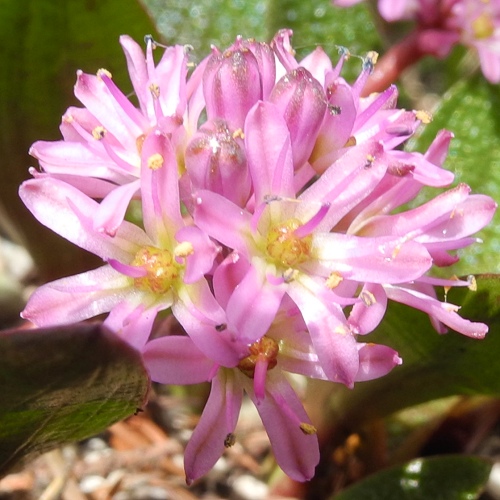Germinating the seeds
When to plant -- Plant your seeds when you receive them for best results. Getting started -- Soak the seeds in a cup of water for about 8 to 12 hours (not more than 24 hours). You may either plant them in individual containers, or together in a communal pot, separating them after a few months. Either way, use containers at least 2 inches (5 cm) tall, with drainage holes. Fill each pot with a well-draining soil mix, such as
2 parts potting soil to 1 part
perlite Place the seeds about 1.5 inches (4 cm) from each other and the sides of the pot. Cover with 1/8 to 1/4 inches (3-6 mm) of soil and add water until the soil is evenly moist, but not fully saturated. Until the seeds sprout, ensure that the soil surface doesn't dry out. If you enclose the pots in a plastic container to maintain moisture, leave it open slightly for fresh air to enter. You may need to drip some water on the surface every day or 2 to keep it moist. Until they sprout, aim to keep them between about 65 and 80 degrees F (18-27°C) during the day (a little cooler at night is ok). I have no experience germinating them outside that temperature range. I recommend placing a minimum/maximum thermometer near the pots, especially if using a heat mat. Keep the pots in a bright spot out of direct sun. The seeds should start sprouting within 6 weeks, but sometimes take up to 3 months to begin sprouting. Once they sprout, give them bright light, but shade them from strong sun exposure. A bright LED bulb or panel kept 4 inches (10 cm) away provides the right amount of light (See: "Growing indoors with LED lights"). It's best to wait until they have at least 2 leaves before transplanting them to larger containers. Transplant gently to avoid damaging the roots. After they are 2-3 months old you may slowly acclimate them to a wider temperature range, and also to brighter light. Fertilizing -- The first 3 months, feed every 7-10 days with a small amount of dilute liquid fertilizer (1/8 strength). Hydroponic fertilizer is ideal for young seedlings, since it is easily absorbed and contains all essential nutrients. After 3 months, you may switch to a granular fertilizer that contains micronutrients, feeding at half the dosage on the package. Dormancy -- The bulbs can drop some or all of their leaves each year for a few months. When this happens, give just enough water to keep the soil slightly moist, until they emerge from dormancy. Pests -- Watch for mealy bugs (cottony growth at soil level). If you see them, try soaking the soil with insecticidal soap. Have fun growing them! - Jeff Strange Wonderful Things
|
|||||||||


